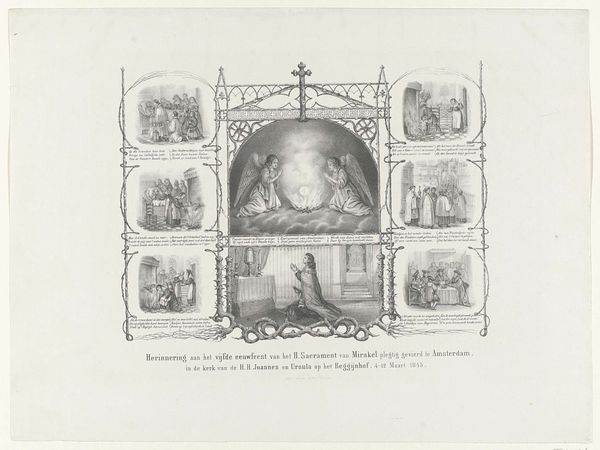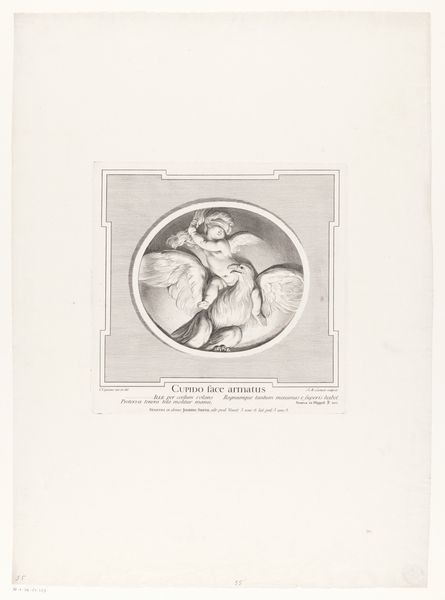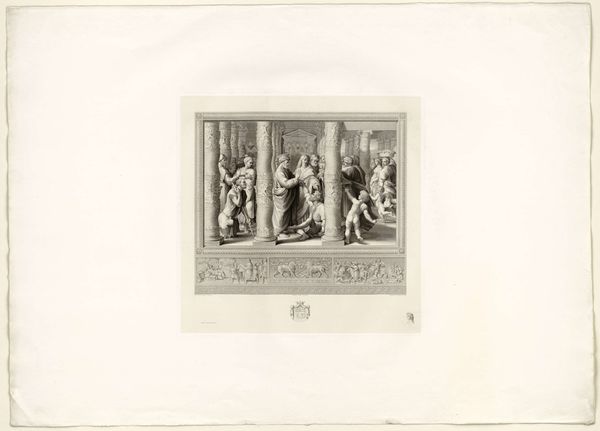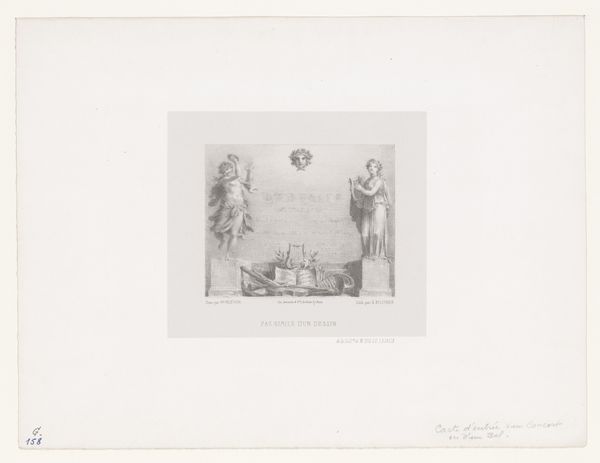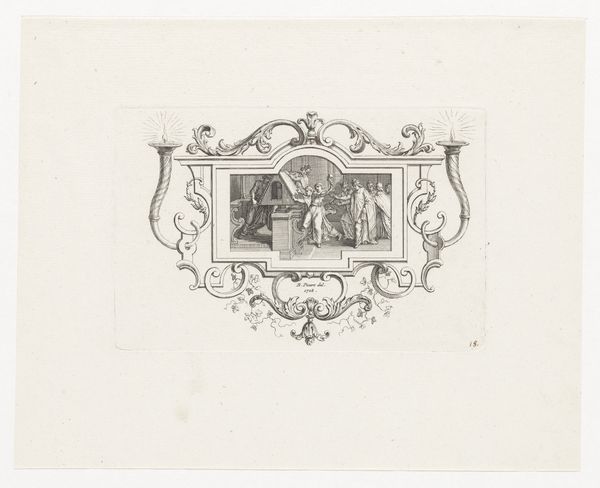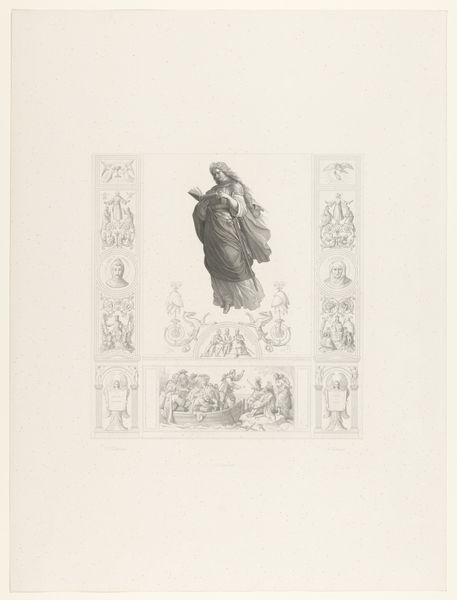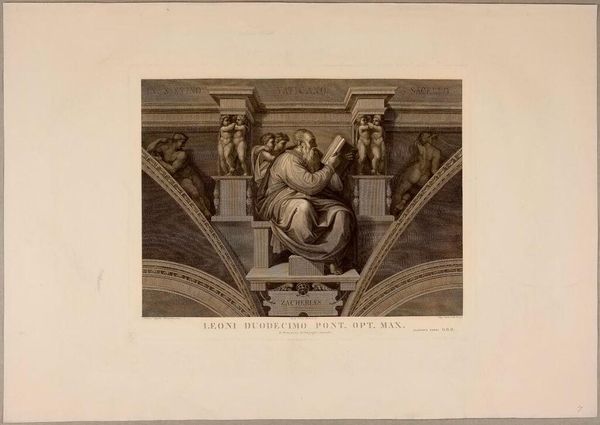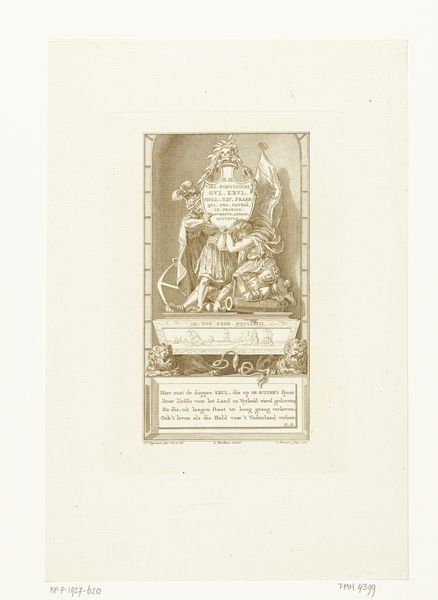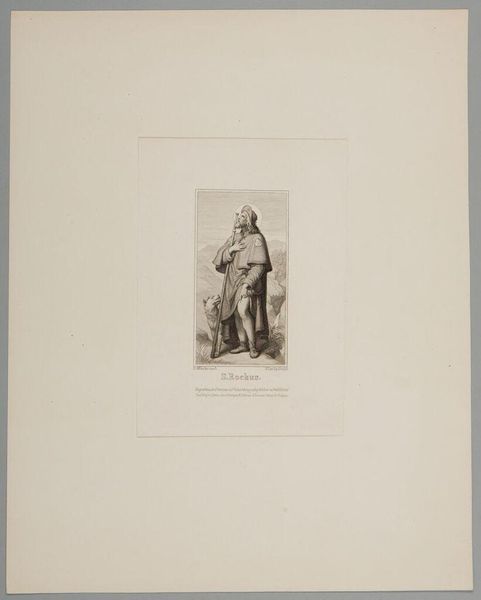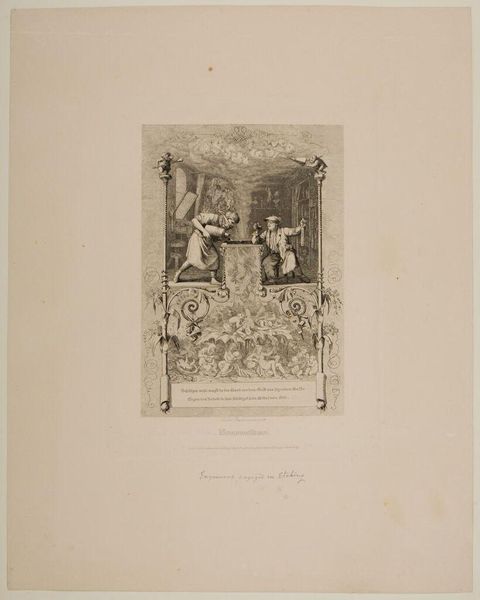
graphic-art, print, engraving
#
portrait
#
graphic-art
# print
#
history-painting
#
academic-art
#
engraving
Dimensions: height 213 mm, width 302 mm, height 400 mm, width 502 mm
Copyright: Rijks Museum: Open Domain
Curator: What a find! Let's dive into this commemorative print: "25-year papacy of Pius IX" from 1871, masterfully engraved by Edouard Taurel. My first impression is that it looks quite formal and serious; how does it strike you? Editor: It does have a certain stateliness. I'm curious about what it's commemorating here, how should one approach this work? Curator: It’s like a time capsule, isn't it? This celebrates Pope Pius IX's, somewhat tumultuous, reign, spanning a quarter century. The central portrait is classically rendered. However, note the surrounding vignettes, those are really windows into the narrative: political events, maybe even personal struggles are hinted at. They present this intricate mosaic of his legacy. Editor: A mosaic... I see. The details in those vignettes are incredible, really. I hadn't considered that this almost felt like an elaborate…news report? Or a religious narrative, or both? Curator: Precisely! That tension between historical record and hagiography is fascinating. Taurel asks us, ‘How should this pontificate be remembered?’. Was Pius IX a staunch traditionalist in a rapidly changing world, or a beacon of faith against all odds? What do you see when you let your eye meander? Editor: Well, I can see arguments for both. The papal coat of arms suggest tradition. At the same time some figures show what might have been conflict, like struggle even! And the Latin text… that contributes a bit to the lofty nature. Curator: Exactly. He was the last pope to rule as a sovereign. The context is key, I think. Look how they combine. I learn something new every time. It helps contextualize the way religion impacts the population in this era. Editor: What do you mean? Curator: Consider, it must have felt reassuring in the late 19th Century for people to look to a familiar religious structure; seeing how the social and political changes had such a radical nature for centuries beforehand. Editor: It's easy to forget the power of that visual language to a population experiencing profound societal transformations. Thanks, I feel I have much more clarity and, most importantly, insight when observing the image. Curator: Absolutely. Seeing something and *really* seeing it are often two completely different things.
Comments
No comments
Be the first to comment and join the conversation on the ultimate creative platform.
